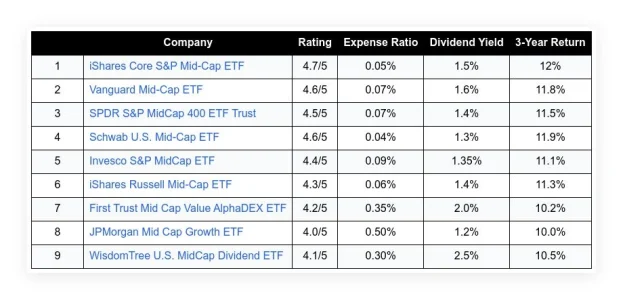After years of hard work and success, the focus shifts from accumulating wealth to intelligently distributing it in retirement. As a result of this transition, there is often a palpable sense of anxiety, especially with saving for the future. In a market filled with financial products and strategies, one stands out as a major contender: the often-maligned, sometimes misunderstood annuity.
Choosing between annuities and direct market investments can be a challenging decision for retirees seeking predictability and guaranteed income. However, direct market investments are subject to significant volatility. Ultimately, who wins this financial showdown: annuities or the broader market?
The answer is not as simple as “check the box.” Instead, you have to take into account your financial goals, your personal risk tolerance, your projected longevity, and even your psychological comfort before you can win this long-term contest. To help you understand which may be right for you in your particular retirement situation, let’s examine the strengths and weaknesses of both options.
Table of Contents
ToggleUnderstanding the Key Players: Annuities and Market Risk
It’s essential to understand what each contender brings to the table before pitting them against one another.
What are annuities?
In general, annuities are contracts issued by insurance companies specifically designed to provide you with a regular income after retirement. You, the annuitant, pay the insurance company in either a lump sum or a series of payments. In exchange, the insurer assures regular payouts after a specified period of growth (immediate annuity) or at a future date (deferred annuity).
As with ice cream shop flavors, annuity offerings come in a variety of flavors, each with its own unique characteristics.
- Fixed Annuities. These provide guaranteed, predictable payments for a specified period or for the remainder of your life. Growth is typically lower, but they provide certainty.
- Variable Annuities. These are more complex, with payouts fluctuating depending on the performance of the annuitant’s investment sub-accounts. Despite their growth potential, they also carry significant risk and are often more expensive.
- Indexed Annuities (Fixed Indexed Annuities – FIAs). These annuities are linked to particular stock market indices (such as the S&P 500), but they come with built-in gain caps and loss floors. With some upside potential and downside protection, they aim to provide some market upside.
- Immediate Annuities (SPIAs). Payments from lump-sum payments begin almost immediately.
- Deferred Annuities (DIA/QLAC). Over time, your investment grows tax-deferred, with payouts starting later (e.g., at age 80 or 85).
What is market risk?
Market risk, also known as systemic risk, refers to the potential for investment losses resulting from broad market fluctuations. After all, investing directly in assets like stocks, bonds, mutual funds, or exchange-traded funds (ETFs) exposes your portfolio’s value to a multitude of external factors. In addition to these factors, economic conditions, interest rates, geopolitical events, investor sentiment, and the performance of particular industries can also influence their performance.
Market investments lack guaranteed income, a characteristic that distinguishes them from other types of investments. A difference between them and annuities is that they don’t guarantee a fixed payout. However, they offer the potential for higher capital appreciation and income growth (through dividends or interest), particularly when held for an extended period.
The Case for Annuities: Security and Predictability as Cornerstones
Rather than focusing on market performance, annuities are most effective when the primary concern is predictability and a guaranteed income stream.
- Guaranteed income for life. There is no doubt that this is the most compelling feature of a lifetime annuity. In addition to offering enormous peace of mind, it provides a reliable “paycheck” that continues for as long as you live. Housing, food, utilities, and healthcare can all be covered by this guaranteed income stream, allowing you to worry less about economic and market downturns.
- Longevity insurance. An Allianz Life survey found that 64% of Americans are more concerned about running out of money than they are about dying. Thankfully, a lifetime annuity specifically protects against this “longevity risk.” If you live to 90, 100, or beyond, you still receive a payment, a promise that no traditional investment portfolio can provide.
- Tax-deferred growth. Until withdrawals begin, the principal and accumulated earnings are tax-deferred in a deferred annuity. Consequently, the gains aren’t taxed annually, resulting in greater accumulations and a greater payout.
- Psychological comfort. Financial anxiety can be significantly reduced for many retirees with a regular, guaranteed payment. This is especially true for individuals without pension plans who are solely dependent on their accumulated savings. In a stock market downturn, knowing that bills will be covered is a source of security.
The downside of annuities.
There is, however, another side to annuities:
- High fees. The fees associated with variable annuities, in particular, are notorious for their layers. These layers include mortality and expense charges, administrative fees, and fees for optional riders. As a result, returns can be significantly eroded.
- Limited access to funds (illiquidity). In general, once the money has been annuitized (converted into a stream of payments), it’s locked up. As such, when faced with an unexpected expense, getting a large lump sum without incurring substantial penalties can be difficult, if not impossible.
- Less inflation protection. In most fixed annuities, the payments remain constant over time. However, inflation can significantly erode the purchasing power of fixed payments over decades. Although some annuities offer inflation riders, their initial payouts are usually lower.
- Lower potential returns. In exchange for guarantees, overall growth is often lower. Annuities, especially fixed annuities, tend to yield modest returns compared to the market’s performance.
The Case for Market-Based Investments: Growth and Flexibility as Priorities
Individuals who prioritize capital growth and want greater control and flexibility over their retirement assets are more likely to invest in the stock market.
- Higher long-term returns. Historically, the stock market has been a powerful source of wealth creation. After accounting for inflation, a diversified portfolio tracking the S&P 500 has averaged returns of around 7-10% annually for the last century. As a result, this potential for significant appreciation vastly outperforms the more conservative returns offered by most annuities.
- Liquidity and flexibility. Annuities lock up money, whereas market investments offer substantial liquidity. So, without the complexities or restrictions often associated with annuities, you can access your funds whenever you need them (within market trading hours), adjust your portfolio allocation as circumstances change, or pass assets directly to your heirs.
- Inflation hedge. A natural hedge against inflation is to invest in stocks (equities). Your purchasing power is preserved over extended periods when companies raise prices for their products and services, and their earnings typically grow with inflation. This is especially important in retirements that may last 20, 30, or even 40 years.
The downside of market-based investments.
There are, however, inherent challenges associated with market investing.
- Market downturns. Market investments can fluctuate dramatically in value. As a result, the value of your portfolio could be significantly affected by market downturns, such as those in 2008 or early 2020.
- Sequence-of-return risk. For retirees, this is a major concern. When you withdraw your funds during a bear market, you are forced to sell more shares at lower prices to generate the same income. In the long run, this can impair your portfolio’s ability to recover and sustain itself, causing it to deplete its funds too quickly.
- Requires emotional fortitude. The ability to stomach volatility is essential for successful market investing. When your portfolio value fluctuates, it can be emotionally overwhelming, and you have to be disciplined to avoid making impulsive, fear-driven decisions (like selling during a downturn).
The Long Run: Who Ultimately Wins? A Multifaceted View
In the end, there is no definitive “winner.” A lot depends on the individual’s circumstances and priorities, such as;
Time horizon and compounding.
For individuals who are decades away from retirement, the market almost always wins. In general, long-term equity investors are rewarded handsomely by compounding, reinvested dividends, and time smoothing out market fluctuations. However, the calculus changes dramatically as you near or enter retirement. The sequence-of-returns risk becomes dominant. As a result, annuities can serve as a vital safety net, protecting a portion of your income from the whims of the market.
Risk tolerance.
It’s all about your comfort level with risk. Certain annuities can provide invaluable peace of mind if market fluctuations keep you up at night, making them the best choice for your psychological well-being. But investors with a higher tolerance for volatility and a longer recovery time can benefit from the market’s potential.
Health and longevity.
Annuities are often most beneficial to individuals who live exceptionally long lives. When you receive payments well beyond the remainder of your life expectancy, a lifetime annuity proves its value. You may be able to enjoy superior long-term value with an annuity if you come from a family with a strong history of longevity. On the other hand, if you live shorter than expected due to health problems, your heirs might end up receiving less than the amount they paid into the contract.
Inflation protection.
Unless you choose annuities with inflation riders (which have lower initial payouts), most fixed annuities offer static payments that diminish over time. Historically, market investments have performed better than inflation in multi-decade retirements, thereby preserving your purchasing power.
Costs and fees.
Often, the market has a clear advantage here. While some annuities, particularly variable ones, can have multiple layers of fees that eat into your returns, index funds and ETFs offer broad market exposure at a fraction of the price. Over time, this efficiency can translate into substantial increases in net returns for market investors.
The Hybrid Approach: Harnessing the Best of Both Worlds
In many cases, combining annuities and market-based investments is the best solution for retirees, rather than choosing either one. As a result of this hybrid approach, the strengths of both will be leveraged and the weaknesses of each will be mitigated.
The “floor and upside” strategy.
With this strategy, you use a portion of your retirement savings to buy an annuity (often a fixed or immediate annuity) so that you can receive a guaranteed income stream that covers your essential living expenses (housing, food, healthcare, utilities). The remaining assets are then invested in the market for growth, providing “upside” potential.
Overall, this approach enables you to combat inflation and alleviate anxiety about market downturns impacting your basic needs.
The “bucket strategy.”
The bucket strategy segments retirement assets based on your anticipated withdrawal timeline and is another practical hybrid approach.
- Short-term bucket (years 1-3). Invests in liquid, low-risk assets such as cash, money market funds, and short-term certificates of deposit (CDs). When the market falls, you can immediately access funds for expenses, preventing the loss of market assets.
- Medium-term bucket (years 3-10). To reduce volatility, funds are allocated to less volatile assets, such as bonds and fixed annuities. In addition to providing more stable returns and modest growth, these assets can also help replenish the short-term stock market bucket.
- Long-term bucket (years 10+). The primary focus is on stocks and other growth-oriented assets. As the bucket with the longest time horizon, it’s able to ride market fluctuations and benefit from long-term compounding, potentially outperforming inflation.
By ensuring you don’t have to sell depreciated assets, this strategy effectively combines security and growth.
Conclusion: “Winning” Is Personal
Is it annuities or the market that wins in the long run? Ultimately, “winning” in retirement depends entirely on how you define it:
- Annuities are likely to win if “winning” means guaranteed income that cannot be outlived, even at the expense of some growth potential.
- Markets generally win when it comes to increasing wealth, achieving higher returns, and having ultimate flexibility to manage your wealth and pass it on.
- You may be able to win by creating a retirement plan that is resilient, balanced, and offers growth and inflation protection while covering your basic needs. It may prove to be the ultimate victor when you combine annuities with market investments.
Ultimately, there is no one-size-fits-all approach to retirement planning. Your choice will be highly personal, based on your financial goals, risk tolerance, health outlook, current income needs, and desire to direct your investments. Having a fiduciary financial advisor on your side can be invaluable in helping you tailor a strategy that perfectly fits your situation.
When you fully understand annuities and market risk, you can make informed decisions and design a retirement future that feels both safe and satisfying.
FAQs
Are annuities always an unwise investment due to the high fees?
Not necessarily.
In some annuities, especially variable annuities, high fees can significantly eat into your returns. However, fixed annuities and single premium immediate annuities (SPIAs) usually have lower fees. Unlike pure investment growth, annuities are usually valued for their guaranteed income and longevity protection. Be sure to compare the costs to the benefits before making a commitment.
How much of my retirement savings should I allocate to an annuity?
Generally, annuities are used to cover essential living expenses (housing, food, utilities, basic healthcare) that are not already covered by Social Security or a pension. By using this “floor and upside” strategy, you can invest the remainder of your portfolio for growth, knowing your basic needs are met regardless of market performance. In some cases, this might be between 25 and 50% of their liquid assets, while in others it might be less.
What is “sequence-of-returns risk,” and why is it so important in retirement?
In retirement, sequencing-of-returns risk occurs when you withdraw funds during a bear market, which can substantially and permanently deplete your portfolio. If you withdraw from a smaller, depressed balance, you’re selling more shares at a low point, even if the market recovers later. As a result, many retirees consider annuities to cover essential expenses, thereby reducing their dependence on market withdrawals in early retirement.
Can an annuity truly protect me from inflation?
Basic fixed annuities typically do not offer inflation protection, meaning that the purchasing power of your fixed payments will diminish over time. Some annuities allow payments to be adjusted for inflation, usually by 3% each year, but these tend to have a significantly lower initial payout. Generally, a portfolio with a strong equity component and a diversified market portfolio is considered a better long-term inflation hedge during retirement.
How can I find a trustworthy financial advisor to help me decide between annuities and market investments?
You should seek out a fee-only fiduciary financial advisor. Unlike commission-based advisors, fee-only advisors are compensated solely by you, the client. A fiduciary is legally obligated to protect your interests. As a result, potential conflicts of interest are greatly reduced.
It’s also possible to find such advisors through organizations such as the National Association of Personal Financial Advisors (NAPFA) or the Certified Financial Planner Board of Standards (CFP Board). Ensure you interview several advisors to find one who shares your philosophy, communication style, and expertise.
Image Credit: Andrea Piacquadio; Pexels

















